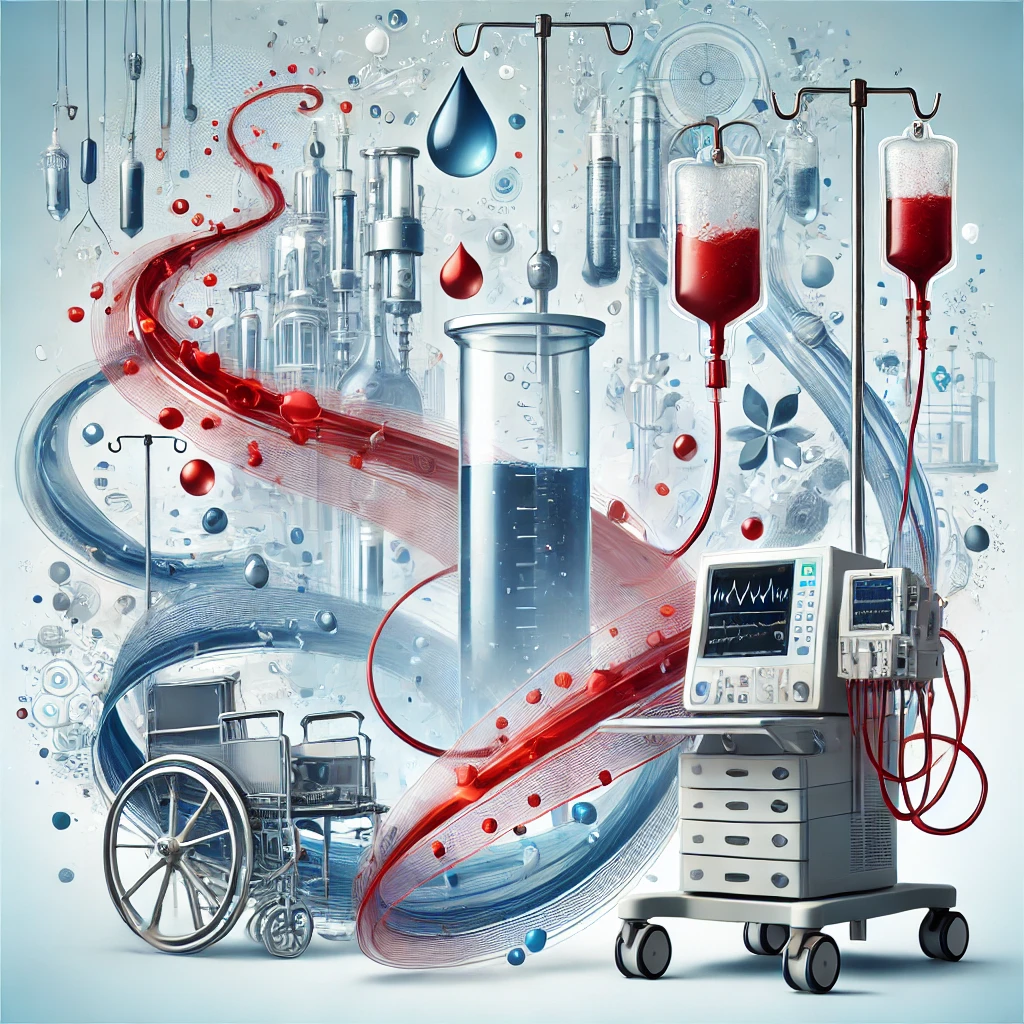Introduction ( la mpotn e laboratorio e meecnic e fluidos)
Healthcare and science share a dynamic relationship, with many advancements emerging from research in various specialized fields. Among these, laboratory mechanics and fluid dynamics are instrumental, especially in diagnostics, pharmaceutical development, and critical medical procedures. This article explores the convergence of fluid mechanics and healthcare, detailing how laboratories utilize these principles to enhance medical outcomes. It will also delve into how healthcare institutions and researchers rely on fluid dynamics for understanding and optimizing systems that benefit patient care.
Healthcare, by nature, is a multidimensional field where mechanical and chemical interactions often govern therapeutic efficacy. Whether developing better drug delivery systems, analyzing blood samples, or managing respiratory equipment, fluid mechanics plays a key role. Laboratories, the heart of diagnostic healthcare, rely heavily on both theoretical and applied fluid mechanics to optimize their operations. This piece offers a deep dive into the complexities surrounding fluid dynamics in healthcare applications, underscoring how laboratories leverage this branch of physics to serve patient needs effectively.
Understanding Fluid Mechanics in Healthcare
Fluid mechanics is the branch of physics concerned with the behavior of liquids and gases in motion and at rest. In the medical field, these principles are applied across various healthcare activities, from respiratory therapy to the design of medical devices. Fluid mechanics helps healthcare providers develop more efficient ways to move and manipulate fluids in the body, such as blood, mucus, and intravenous drugs, ensuring optimized patient care. The study of fluid behavior provides insight into solving health-related challenges, such as hypertension and vascular blockages.
Modern laboratories focus on mechanics and fluid mechanics to enhance diagnostic accuracy and therapeutic efficiency. For example, blood flow measurements assist in diagnosing cardiovascular diseases, while fluid mechanics principles underpin the working of ventilators used for respiratory support. Understanding these mechanics allows laboratories to predict outcomes more effectively, thus improving the quality of healthcare services.

The Role of Laboratories in Healthcare Fluid Mechanics
Laboratories are at the forefront of medical innovations, performing complex tests and developing techniques to address various health challenges. Fluid mechanics plays an essential role in these facilities, providing the backbone for several diagnostic tools and research initiatives.
One practical application is in blood analysis. By understanding the viscosity and flow rate of blood, laboratory technicians can diagnose various conditions, such as anemia or clotting disorders. Fluid dynamics principles are also critical in developing better laboratory equipment, such as pipettes and centrifuges, which rely on precise fluid measurements.
Moreover, laboratories collaborate with mechanics engineers and pharmaceutical companies to develop efficient drug delivery systems. Technologies such as intravenous (IV) infusion pumps or insulin pumps require a deep understanding of fluid mechanics to ensure drugs are administered in precise doses over time. It is crucial for patient safety and therapeutic effectiveness.
Fluid Dynamics and Respiratory Health
The healthcare sector, particularly in respiratory therapy, frequently employs fluid mechanics principles. Breathing is a fluid dynamic process involving the movement of air through the lungs and bronchial tubes. Disorders like asthma, chronic obstructive pulmonary disease (COPD), and pneumonia involve disruptions in airflow, necessitating an understanding of fluid dynamics for effective treatment.
Mechanical ventilators, for example, rely on airflow management to deliver oxygen to patients suffering from respiratory distress. Fluid mechanics principles enable healthcare providers to adjust ventilator settings to ensure optimal air exchange, enhancing patient outcomes. Similarly, inhalers and nebulizers used in treating asthma and COPD depend on aerosol fluid mechanics to deliver medications effectively.
Application of Fluid Mechanics in Cardiovascular Healthcare
In cardiovascular healthcare, fluid mechanics plays a pivotal role in understanding and managing the flow of blood throughout the body. Blood is a non-Newtonian fluid, meaning its viscosity changes with flow conditions. Conditions such as hypertension, arterial blockages, and aneurysms are all influenced by abnormal blood flow patterns.
Healthcare professionals rely on fluid dynamics models to predict how changes in blood flow can impact the cardiovascular system. For example, doppler ultrasound technology measures blood flow in real-time, helping physicians diagnose issues such as vascular stenosis or deep vein thrombosis (DVT). In surgeries, especially during cardiopulmonary bypass, fluid mechanics principles ensure the smooth operation of machines that take over the heart and lung functions.

Pharmaceutical Development and Fluid Mechanics
The pharmaceutical industry heavily relies on laboratories and fluid mechanics principles for drug formulation and testing. During the development phase, medications undergo rigorous testing to ensure they dissolve and distribute properly in the bloodstream. Solubility and diffusion rates—both governed by fluid mechanics—are key to predicting how a drug will behave in the body.
For instance, the efficiency of oral medications depends on how well they dissolve in gastrointestinal fluids. Injectable drugs require precise fluid behavior to ensure they spread evenly within tissues. Additionally, intravenous drugs must be formulated with specific viscosity and flow properties to ensure they reach the bloodstream without causing blockages or adverse reactions.
In manufacturing, fluid mechanics principles are crucial for creating efficient production processes. Mixing, emulsification, and packaging processes all depend on fluid dynamics for consistent drug quality. Sterilization processes, essential for ensuring the safety of medical products, also rely on fluid mechanics to distribute disinfectants effectively.
Infection Control and Fluid Dynamics
Infection control is another area where fluid mechanics plays a vital role. Medical facilities, including hospitals and clinics, must control airflow to prevent the spread of infectious diseases. The COVID-19 pandemic highlighted the importance of airborne transmission control through proper ventilation systems.
Laboratories and healthcare facilities employ air filtration systems that utilize fluid mechanics principles to remove contaminants from the air. Similarly, laminar airflow systems in operating rooms maintain sterile environments by ensuring a unidirectional flow of clean air, minimizing the risk of infection during surgeries.
Fluid mechanics also contributes to developing antiseptic solutions and hand sanitizers, which require the right viscosity to spread effectively and cover surfaces adequately. Laboratories work on optimizing these solutions, balancing their effectiveness against bacteria with user comfort and ease of application.
Fluid Mechanics and Dialysis Machines
Patients with kidney failure depend on dialysis machines to filter waste products from their blood, mimicking the function of healthy kidneys. These machines operate on fluid mechanics principles, ensuring that blood flows smoothly through the machine’s filters and returns to the patient’s body without clotting or causing discomfort.
Dialysis machines require precise control of fluid pressures and flow rates to function effectively. Healthcare professionals and laboratory technicians work together to monitor and adjust these parameters, ensuring the safety and well-being of patients undergoing treatment.

Challenges and Innovations in Laboratory Fluid Mechanics
While fluid mechanics has significantly advanced healthcare, challenges remain. One major issue is the complexity of biological fluids, which can behave unpredictably under different conditions. Blood, for example, changes viscosity in response to temperature, stress, and flow rate, complicating the design of medical devices and diagnostic tools.
Laboratories continue to research and develop new methods for understanding and controlling fluid behavior. Innovations such as microfluidics—the manipulation of fluids at the microscopic scale—are transforming diagnostics and treatment. Microfluidic devices enable rapid testing using tiny fluid samples, making them ideal for point-of-care testing and personalized medicine.
Conclusion
Fluid mechanics plays a foundational role in modern healthcare, driving advancements in diagnostics, treatment, and pharmaceutical development. Laboratories serve as the hub for applying these principles, working closely with healthcare providers to enhance patient outcomes. From cardiovascular health to respiratory therapy, infection control, and drug development, fluid dynamics influences every aspect of healthcare delivery.
As research in fluid mechanics progresses, new technologies and innovations will continue to emerge, addressing the challenges that currently limit the field. With a focus on precision medicine and personalized care, the integration of fluid mechanics in healthcare promises to revolutionize patient outcomes and improve the efficiency of medical services worldwide. Through a collaborative approach involving laboratories, healthcare providers, and researchers, the future of healthcare looks more promising, efficient, and patient-centric.
This article aimed to comprehensively cover the convergence of laboratory mechanics and fluid mechanics in healthcare. By integrating fluid dynamics into healthcare practices, laboratories continue to play a critical role in solving complex medical challenges and improving patient care, shaping the future of medicine for the better.



